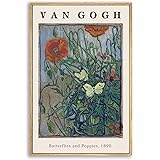The allure of a home that whispers rather than shouts is increasingly sought after. This embrace of quiet beauty, known as Wabi-Sabi interior design, has captivated many, with related discussions garnering significant attention—for instance, one video exploring Wabi-Sabi aesthetics in modern homes has been cherished by over 1 million viewers, demonstrating a widespread desire for this mindful approach. Wabi-Sabi isn’t just a style; it is a philosophy that finds profundity in the everyday, beauty in the imperfect, and peace in simplicity. However, like any nuanced philosophy, its essence can easily be misconstrued, leading to common design pitfalls. Understanding these missteps is crucial for cultivating a truly authentic Wabi-Sabi living space.
When considering Wabi-Sabi, it is an invitation to appreciate the passage of time, the warmth of natural materials, and the unique story told by an object’s wear. It is less about achieving a specific look and more about fostering a feeling of gentle acceptance and tranquility within your home. The aim is to create an environment where every element is allowed to be itself, unfussily and honestly. Below, we delve deeper into the most frequent mistakes that are made when attempting to imbue a home with the spirit of Wabi-Sabi, offering insights to guide your design journey towards genuine calm and honesty.
Understanding Wabi-Sabi: Avoiding Common Design Mistakes
1. Confusing Wabi-Sabi Interior Design with Cold Minimalism
One of the most frequent misconceptions is the conflation of Wabi-Sabi with pure minimalism. While both styles appreciate simplicity and uncluttered spaces, their underlying philosophies diverge significantly. Minimalism often strives for sleek lines, perfect surfaces, and an absence of ornamentation, sometimes leading to environments that are perceived as stark or unwelcoming. In contrast, Wabi-Sabi celebrates the visible traces of time and human touch, finding beauty in an antique’s patina or a handmade ceramic’s irregular shape. The difference might be understood by comparing an empty, perfectly sterile laboratory to a seasoned chef’s kitchen, where every worn utensil and well-used cutting board tells a story of creation and purpose.
To truly embrace Wabi-Sabi, a space should feel lived-in and soulful, not barren. Objects are selected for their intrinsic beauty, usefulness, and the connection they forge with nature and memory. Instead of stripping away everything, items with history and character are carefully chosen and given space to breathe. This thoughtful curation ensures that the room retains warmth and depth, reflecting a serene and authentic existence.
2. The Pitfall of Over-Styling Imperfection
Authenticity is at the heart of Wabi-Sabi, making the act of ‘staging’ imperfection a direct contradiction to its principles. When cracks, chips, or wear marks are deliberately manufactured or artfully arranged to look imperfect, the genuine magic that comes from natural aging is lost. This often happens with mass-produced decor that attempts to mimic a weathered look through factory distressing, resulting in pieces that feel contrived rather than genuinely cherished. The goal is not to create an illusion of age, but to allow age and use to naturally unfold.
Instead, the focus is placed on selecting pieces that have genuinely acquired their imperfections over time, or those that are handmade with inherent variations. A ceramic bowl with a naturally uneven glaze, a piece of reclaimed wood furniture bearing the marks of its previous life, or a linen throw that softens and creases with use—these are the elements that genuinely contribute to a Wabi-Sabi aesthetic. This approach ensures that every imperfection tells an honest story, inviting a deeper connection with the objects that furnish the home.
3. Overlooking Comfort and Invitation
Another common misinterpretation is the belief that Wabi-Sabi demands austere or monk-like living spaces. This often results in rooms that, while simple, lack the inviting warmth and comfort essential for true serenity. Wabi-Sabi is deeply rooted in mindful living and finding peace, which inherently includes a sense of ease and physical comfort. A truly Wabi-Sabi space should encourage relaxation and contemplation, not discomfort or a feeling of deprivation.
To correct this, attention should be paid to tactile elements. Soft, natural fabrics like linen, organic cotton, or wool are layered to create a sense of luxurious comfort. Cushions are plumped, throws are draped invitingly, and seating is chosen for its ability to foster rest. Lighting is also crucial, with a preference for gentle, warm illumination that softens edges and invites stillness. The intention is to create an environment that feels like a comforting embrace, a quiet sanctuary where one can truly unwind and be present.
4. The Detriment of Synthetic Materials
The use of plastic, synthetic fabrics, or engineered finishes can severely detract from the Wabi-Sabi aesthetic, as these materials often lack the natural texture, warmth, and organic feel that are fundamental to the style. Their uniform perfection and often artificial sheen disrupt the connection to nature and the celebration of organic impermanence. A Wabi-Sabi space seeks to echo the natural world, and synthetic elements can create a jarring contrast.
A more authentic approach involves favoring natural materials exclusively. Wood, clay, linen, rattan, paper, stone, and untreated metals are highly valued for their inherent beauty, tactile qualities, and the way they age gracefully. These materials absorb light softly, develop unique patinas over time, and offer a sensory richness that synthetic alternatives cannot replicate. They connect the indoor environment to the outside world, creating a harmonious and grounded atmosphere. For those interested in exploring beyond typical neutrals, it is worth noting that Wabi-Sabi color palettes can extend to include a broader spectrum of natural, muted tones; six timeless palettes that transform home style have been shared in another helpful guide.
6. Clutter Misrepresented as Character
While Wabi-Sabi embraces a certain lived-in quality and values meaningful objects, it should never be confused with disarray or excessive clutter. A space filled with too many trinkets, even if each holds personal significance, can quickly overwhelm the senses and disrupt the serene simplicity that Wabi-Sabi aims to achieve. The philosophy champions mindful living, which includes a disciplined approach to possessions, ensuring that each item genuinely serves a purpose or evokes a profound sense of beauty.
Thoughtful curation is key. Instead of displaying ten small decorative items, perhaps one exquisitely handmade vase is chosen to stand alone, allowing its form and texture to be fully appreciated. Negative space is intentionally left between objects, allowing the eye to rest and the overall composition to feel balanced and calm. This principle can be compared to a haiku, where a few carefully chosen words convey deep meaning, rather than a lengthy, verbose poem. Each piece is given room to breathe, enhancing its individual presence and contributing to a harmonious environment.
7. The Harshness of Overhead and Bright Lighting
Lighting plays a critical role in setting the mood and revealing the textures inherent in a Wabi-Sabi home, making harsh or overly bright overhead lighting a common design mistake. Such illumination can flatten textures, eliminate the subtle interplay of light and shadow, and strip a room of its poetic depth. The beauty of imperfection, particularly the nuanced details of aged materials or handmade objects, often relies on how light gently falls upon them, highlighting their unique character rather than washing it out.
Instead, warm-toned bulbs and diffused light sources are preferred. Paper lanterns, lamps with natural fabric shades, or strategically placed accent lighting can create a soft, inviting glow. Natural daylight is welcomed but often softened with sheer linen curtains or indirect sources. Shadows are not avoided; rather, they are seen as integral to the beauty, adding depth, mystery, and a sense of calm to the space. The overall effect is one of gentle illumination, allowing the room to feel enveloped in a soft, welcoming warmth.
8. Neglecting the Essential Human Element
A common oversight is the creation of spaces that, despite their natural materials and simplicity, feel untouched and sterile, as if awaiting a showroom display. Wabi-Sabi, however, inherently honors the traces of life and human presence. A home that looks too perfect misses the point of celebrating impermanence and the subtle narratives of daily living. The philosophy acknowledges that a space truly comes alive when it bears the gentle marks of its inhabitants.
This means allowing for signs of living. A casually placed throw, the slight creasing in a well-used cushion, or the developing patina on a wooden surface are not seen as flaws but as testaments to ongoing life. A book left mid-read on a side table or a cherished, slightly chipped cup waiting to be used can contribute to an honest, welcoming atmosphere. These elements create a sense of ease and belonging, reminding us that a Wabi-Sabi home is a sanctuary for living, not a museum.
9. Diluting Harmony with Too Many Design Languages
Attempting to combine a multitude of distinct design styles—such as Scandinavian, industrial, and bohemian—all at once can dilute the quiet harmony that is central to Wabi-Sabi. Each design language brings its own set of aesthetics, materials, and sensibilities. When too many competing themes are introduced, the subtle, cohesive rhythm of a Wabi-Sabi space can be lost, resulting in a feeling of visual noise rather than serene balance.
Maintaining a consistent rhythm is crucial for Wabi-Sabi. This is achieved through a coherent palette of natural materials, low contrast colors, and soft, organic shapes. While variety is embraced, it is primarily expressed through texture rather than disparate thematic elements. For example, different textures of linen, wood, and clay can coexist harmoniously within a consistent color scheme. The goal is to create a seamless flow, where individual elements contribute to a unified sense of calm, rather than vying for attention. For those who enjoy blending styles, insights on how Wabi-Sabi can be mixed with other design languages while maintaining its calm, cohesive, and intentional feel are continually explored.
10. Reducing Wabi-Sabi to a Mere Trend
Perhaps the most significant mistake is treating Wabi-Sabi as just another fleeting interior design trend, reducing it to a checklist of aesthetic elements. When its deeper philosophical roots are ignored, the decor may mimic the look but will ultimately lack the profound soul and meaning that define Wabi-Sabi. This approach often results in a superficial imitation that misses the core message of acceptance, impermanence, and the beauty found in natural cycles.
Wabi-Sabi is, at its core, a mindset—a way of viewing the world and our relationship with it. It is about embracing the beauty of aging, the simplicity of what is essential, and the imperfection inherent in all things. The decor in a Wabi-Sabi home is merely a reflection of this inner calm and philosophical perspective. By focusing on the underlying principles of authenticity, humility, and appreciation for the natural world, a space can truly embody the quiet, reflective beauty of Wabi-Sabi interior design, offering a lasting sense of peace and groundedness.











